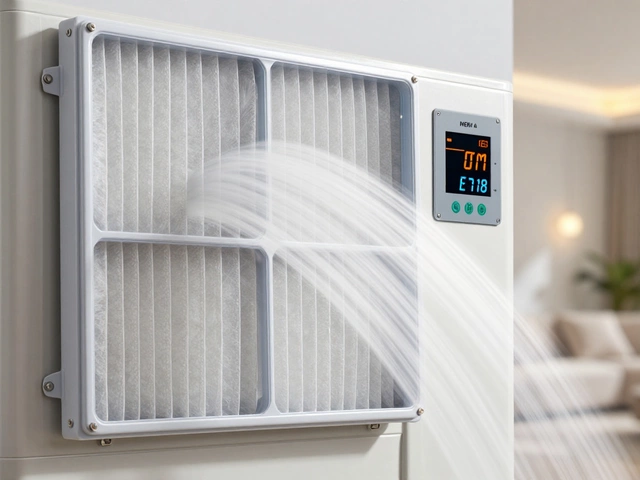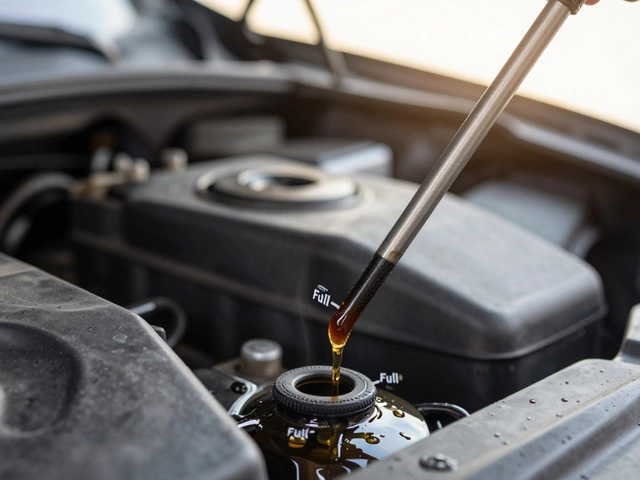
So, you're in need of a new car radiator. Maybe it's leaking, maybe it's beyond repair. But how much should you really expect to shell out for a replacement? Let's break this down a bit.
On average, replacing a car radiator will set you back anywhere from $300 to $900. Now, if that sounds like a wide range, well, it is. Prices can vary greatly depending on a few things like the make and model of your vehicle, where you're located, and whether you're planning to DIY or hire a pro.
Many folks don't realize that labor costs often form a big chunk of this expense. While the radiator part itself might cost $150 to $400, the work to install it could add another $100 to $500. This is especially true if you're driving something a bit more exotic than your standard sedan.
Thinking about doing it yourself? That's a bold move but can save you quite a bit in labor costs if you're handy with tools and willing to spend a Saturday working under the hood.
- Understanding Radiator Costs
- Factors Affecting Replacement Price
- DIY vs Professional Replacement
- Tips to Save on Radiator Replacement
- Common Signs of Failing Radiators
- Maintaining Your Radiator
Understanding Radiator Costs
Costs for a radiator replacement can really depend on several factors. The first place to start is the vehicle itself. Different cars have different radiator needs. For instance, replacing the radiator on a compact car is usually cheaper than on a large SUV or luxury vehicle—due to the size and complexity of the parts.
Parts vs. Labor
When you're looking at the bill, know that it typically breaks down into two main parts: the cost of the radiator itself, and labor fees. The radiator cost might be anywhere from $150 to $400. However, if you're driving a high-performance vehicle, expect those figures to climb. Then add labor on top, which can range from $100 to $500 depending on how tough it is to access the radiator in your car.
Regional Price Differences
Surprising to some, location can also impact the cost. Need a new radiator in New York or Los Angeles? You'll likely pay a premium compared to smaller towns. It's a supply and demand thing, plus city shops tend to have higher overheads.
Aftermarket vs OEM
Another factor is whether you go with OEM (Original Equipment Manufacturer) or aftermarket parts. OEM parts tend to cost more, like a part from the original manufacturer. Aftermarket parts, which are built by other companies, can be a bit cheaper but vary in quality.
| Part Type | Average Cost |
|---|---|
| Aftermarket | $150 - $250 |
| OEM | $250 - $400 |
Make sure you weigh the pros and cons before deciding which type to buy—your engine’s health could depend on it!
In conclusion, understanding these various factors can help you land on a realistic price range for your radiator replacement. Do a bit of research and you might just save yourself a chunk of change.
Factors Affecting Replacement Price
When you think about how much it should cost to replace a car radiator, several factors come into play. It's not just a one-size-fits-all kind of deal. Let's break down some of the main contributors to the price tag.
Car Make and Model
The make and model of your car play a huge role in the cost. A common model with a standard radiator will generally cost less to fix than a high-end vehicle with a specialized cooling system. For instance, a radiator in a Toyota Camry might be much cheaper to replace than one in a BMW 5 Series.
Location Matters
Where you live can impact the cost too. Urban areas with a high cost of living tend to have pricier labor rates. So, if you're in a city, expect to pay more in labor compared to someone in a rural area.
Parts Quality
The kind of parts you choose influences the final bill. OEM (Original Equipment Manufacturer) parts usually come with a higher price tag compared to aftermarket options. Aftermarket can be cheaper, but sometimes there are trade-offs in terms of quality and fit.
Labor Rates
Labor makes up a chunk of the radiator replacement cost. The more involved the job, the higher the labor fee. Cars with engines that are tricky to access may require more time and, therefore, more money to fix.
Unexpected Extras
Sometimes, when replacing a radiator, other issues might surface. For example, you might discover that coolant hoses are worn or the thermostat has seen better days. Tackling these extra fixes will add to your overall cost but can prevent future headaches.
| Factor | Impact on Cost |
|---|---|
| Car Make/Model | Higher for luxury or rare cars |
| Location | Higher in urban areas |
| Parts Quality | Higher for OEM parts |
| Labor Rates | Varies significantly by region |
| Extras | Can increase overall cost |
By understanding these factors, you can better prepare yourself financially and make informed decisions about your vehicle repair options.
DIY vs Professional Replacement
Deciding whether to tackle a car radiator replacement yourself or hire a professional can be a bit of a conundrum. Both options have their pros and cons, and what works for one person might not work for another. Let’s dig into the key points to consider for each approach.
Going the DIY Route
Feeling adventurous? Opting for the DIY route can save you a decent amount of cash on labor. If you’re comfortable around engines and have a basic understanding of your vehicle, it might be worth a shot.
- Cost Savings: By only paying for the parts, which range from $150 to $400, you could avoid a hefty labor bill.
- Learning Experience: It’s a great way to learn more about your car and gain some hands-on experience.
- Time-Consuming: If you’re new to this, expect it to take a few hours. Watching online tutorials and following guides is a must.
- Tools Needed: Make sure you have a decent set of tools. It's not complicated, but having the right gear is crucial.
Not all car models make DIY easy, though. Some have cramped engine bays or components that need special attention, so it pays to do a bit of research first.
Choosing a Professional
If you’re not quite ready to dive under the hood yourself, there’s no shame in calling a pro. Here's why some people choose this route:
- Peace of Mind: A professional ensures the job's done right, reducing the hassle if anything goes wrong in the process.
- Warranty and Guarantees: Most shops provide some form of warranty, which can be reassuring.
- Time Savings: While you sip your coffee, they handle everything. A good option if your schedule is packed.
- Labor Costs: Depending on where you live and your car's specifics, expect to pay $100 to $500 for labor.
Here’s a quick comparison:
| Aspect | DIY | Professional |
|---|---|---|
| Cost | Parts Only | Parts + $100-$500 Labor |
| Time | Several Hours | 1-2 Hours |
| Warranty | No | Yes, Typically |
| Skill Level | Intermediate | N/A |
At the end of the day, whether you choose DIY or a professional, replacing a radiator is a critical task for keeping your car running smoothly. Weigh your options based on your budget, time, and confidence in your mechanical skills.

Tips to Save on Radiator Replacement
Replacing a car radiator doesn't have to break the bank. There are several smart ways to reduce the costs involved without sacrificing quality. Here are a few tips to consider:
1. Shop Around for Prices
Don't just go with the first quote you get. Check with multiple repair shops and online stores for part prices and labor rates. Sometimes local mechanics offer amazing deals, especially if they're trying to build up their customer base.
2. Consider Aftermarket Parts
Aftermarket radiators can be a viable option. Typically, they cost less than OEM (Original Equipment Manufacturer) parts while still delivering decent performance. Just make sure you're buying from a reputable manufacturer to avoid quality issues down the line.
3. DIY If You're Handy
If you're comfortable with a wrench and have some basic mechanical skills, you can save quite a bit on radiator replacement by doing it yourself. There are plenty of online tutorials and guides that walk you through the process step by step.
4. Regular Maintenance
Keeping your radiator in good shape can prevent the need for a premature replacement. Regularly check for leaks and maintain proper coolant levels. Also, ensure that the cooling fans are functioning correctly. Simple maintenance tasks can extend your radiator's life significantly.
5. Look for Promotions
Keep an eye out for sales and promotions. Auto part retailers and service centers occasionally offer discounts on car repair parts or reduce labor costs during slow seasons.
6. Use Online Resources
Online automotive forums are great places to find tips from fellow car enthusiasts. Members often share their experiences and recommendations about where to find good deals or which brands to trust for parts.
| Cost Aspect | Potential Savings |
|---|---|
| Aftermarket Parts | 20-40% less than OEM |
| DIY Labor | 100% labor cost saved |
| Shopping Around | Up to 30% savings |
With these strategies, you can keep your vehicle running smoothly without having to empty your wallet. Just remember, the key is to be informed and a little bit savvy in your approach.
Common Signs of Failing Radiators
A failing car radiator can sneak up on you, so it's essential to know the warning signs. Catching these early can save you from major headaches down the road!
1. Overheating Engine
If you've noticed your engine temperature gauge creeping up into the red zone, that might be a hint that your radiator is in trouble. An overheating engine is one of the classic symptoms of a radiator on the fritz.
2. Coolant Leaks
Spot a green, yellow, or orange puddle under your parked car? That's likely leaking coolant, and it's a telltale sign of a radiator issue. Check around the vehicle to see where it's coming from.
3. Discolored or Sludgy Coolant
Regularly check your radiator fluid. If it's looking rusty or has debris floating in it, your radiator might be corroding inside, affecting its performance.
4. Low Coolant Levels
If you find yourself topping off the coolant reservoir more often than not, something's amiss. While it might not always be visible, a failing radiator can cause this sneaky loss of coolant.
5. Damaged Radiator Fins
A glance at your car radiator's front section will show you whether the fins are bent or damaged. These fins are crucial for cooling, so if they're not in the best shape, the performance will drop.
6. Odd Engine Smells
Notice unusual sweet or burnt smells coming from under the hood? This could signal a leaking radiator causing coolant to burn off on the hot engine parts.
Staying aware of these signs could mean the difference between a simple radiator replacement and dealing with extensive engine repairs. Being proactive is key!
Maintaining Your Radiator
Keeping your car's radiator in tip-top shape is a smart move, saving you money and avoiding those unexpected roadside breakdowns. Here's how you can make sure your car radiator keeps cool and efficient.
Regular Checkups
Let’s be honest, most of us only think about our radiator when it’s causing trouble. But, a bit of proactive care can go a long way. Make sure your car gets a complete checkup regularly. Your friendly neighborhood mechanic can help spot potential problems before they become costly repairs.
Coolant Levels Matter
Coolant isn’t just there for show. It’s essential for keeping your engine from overheating. Regularly check your coolant levels and top up if necessary. And don't just use any old thing—stick to the coolant recommended by your car manufacturer.
Flush The System
A coolant flush every couple of years can be a real game-changer. It clears out the gunk and rust that builds up over time. Clean coolant is crucial for the longevity of your radiator and helps it function optimally.
- Schedule a flush roughly every 24,000 miles or as advised in your owner's manual.
- Consider doing this at home if you’re confident, or leave it to a pro.
Keep an Eye on the Radiator Cap
It's easy to overlook the radiator cap, but this small part plays a big role in maintaining proper pressure and temperature. Make sure it's sealing properly and replace it if it's looking worse for wear.
Be Aware of Leaks
Spotting a leak early on can save you a headache later. Check under your car for puddles, reddish or greenish in color, which might indicate a coolant leak. If you spot one, addressing it quickly will keep your car radiator from failing.
Winter Woes
Cold weather can be tough on radiators. Make sure your antifreeze levels are adequate before the first frost hits. This prevents freezing and helps lubricate your water pump.
With some routine TLC, your radiator will run smoothly and keep your engine cool. It’s all about prevention—it might not be glamorous, but it sure beats a surprise breakdown!





